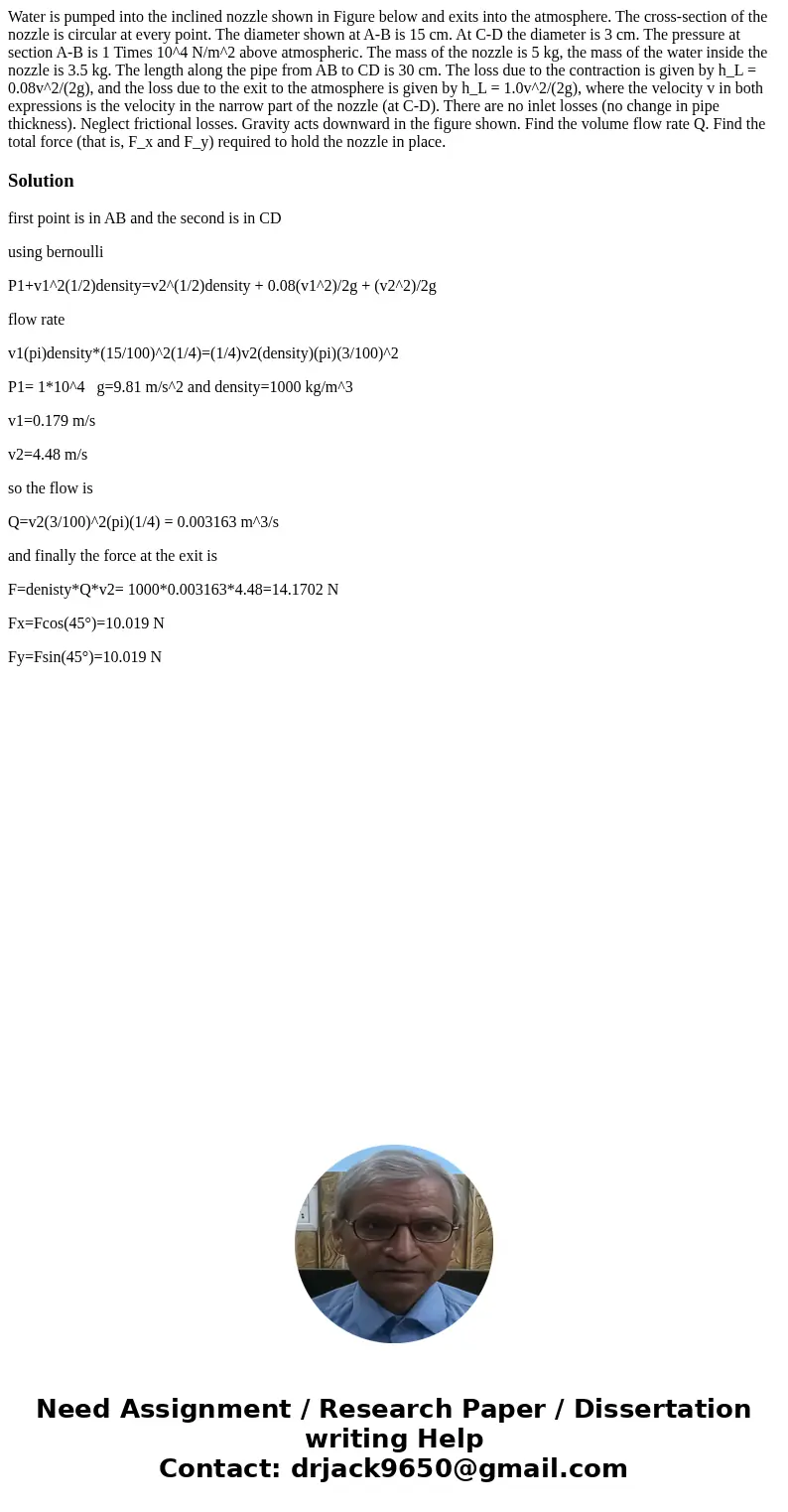Water is pumped into the inclined nozzle shown in Figure bel
Water is pumped into the inclined nozzle shown in Figure below and exits into the atmosphere. The cross-section of the nozzle is circular at every point. The diameter shown at A-B is 15 cm. At C-D the diameter is 3 cm. The pressure at section A-B is 1 Times 10^4 N/m^2 above atmospheric. The mass of the nozzle is 5 kg, the mass of the water inside the nozzle is 3.5 kg. The length along the pipe from AB to CD is 30 cm. The loss due to the contraction is given by h_L = 0.08v^2/(2g), and the loss due to the exit to the atmosphere is given by h_L = 1.0v^2/(2g), where the velocity v in both expressions is the velocity in the narrow part of the nozzle (at C-D). There are no inlet losses (no change in pipe thickness). Neglect frictional losses. Gravity acts downward in the figure shown. Find the volume flow rate Q. Find the total force (that is, F_x and F_y) required to hold the nozzle in place.
Solution
first point is in AB and the second is in CD
using bernoulli
P1+v1^2(1/2)density=v2^(1/2)density + 0.08(v1^2)/2g + (v2^2)/2g
flow rate
v1(pi)density*(15/100)^2(1/4)=(1/4)v2(density)(pi)(3/100)^2
P1= 1*10^4 g=9.81 m/s^2 and density=1000 kg/m^3
v1=0.179 m/s
v2=4.48 m/s
so the flow is
Q=v2(3/100)^2(pi)(1/4) = 0.003163 m^3/s
and finally the force at the exit is
F=denisty*Q*v2= 1000*0.003163*4.48=14.1702 N
Fx=Fcos(45°)=10.019 N
Fy=Fsin(45°)=10.019 N

 Homework Sourse
Homework Sourse